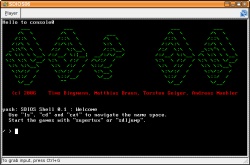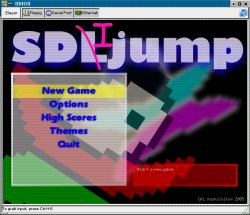SDIOS06 - Source Code and Ready-To-Run Image
Posted on 2006-09-14 09:26 by Timo Bingmann at Permlink with 2 Comments. Tags: #sdios06 #university #c++
As promised the source code to SDIOS06 was released under the GPL.
SDIOS06 is a toy operating system developed during the practical course SDI (System Design and Implementation) at the Systems Architecture Group of the University of Karlsruhe. It was designed and written by Timo Bingmann, Matthias Braun, Torsten Geiger and Andreas Mähler. Two games were ported to a custom SDL implementation using the VMware "hard"-ware: SDLjump and SuperTux. For more information and screenshots see my blog entry 20060727-SDI-Demo.
The source code archive was published on the L4Ka.org page: http://www.l4ka.org/86.php
A local copy of the source archive (7.4 MB) is available as well. The README file contains a great deal of information about SDIOS06's design and modules. The complete source code can be browsed on the web.
To make demonstration as easy as possible a ready-to-run binary vmware image (3.8 MB) can be downloaded. The image contains SDIOS06 installed on a virtual vmware disk image. The VMware image can be run using the free VMware Player.


